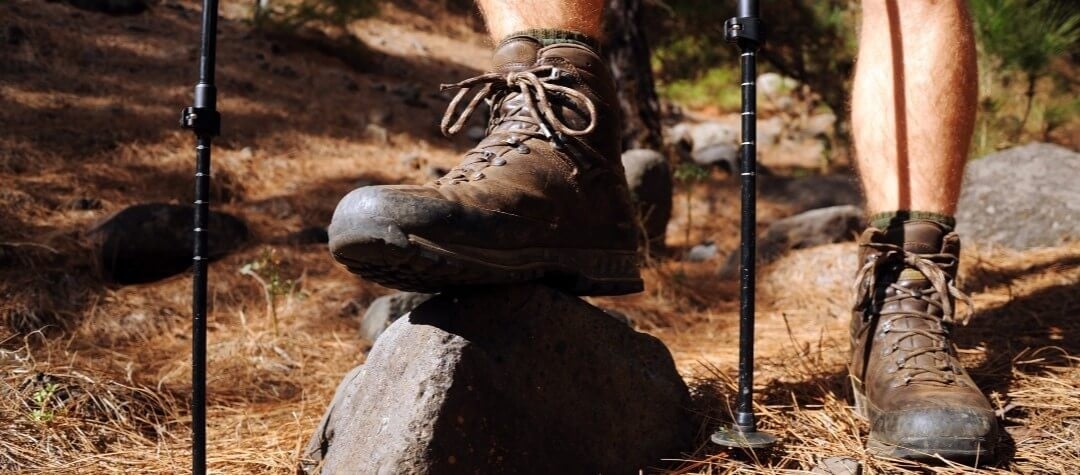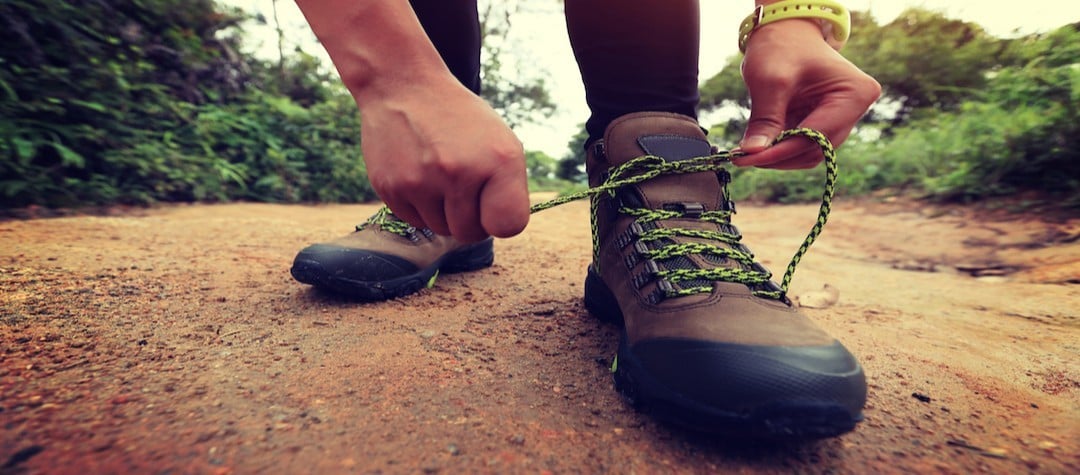It’s vitally important that you get the right footwear for your walking adventures. Here are some top tips to help you make the right choice.
Having the wrong footwear can really hamper you when out walking, so it’s key that you take some time to make sure your walking boots or shoes give you the maximum comfort and support.
The ideal footwear for walking enhances shock absorption without hampering the natural movement of the foot. If you are looking at a shoe rather than a boot, the heel of a walking shoe should be lower than a running shoe and shouldn’t flare out at the back. In fact, the heel may even be undercut at the back to allow for a smooth roll through from heel to toe.
A roomy toe box allows the natural splaying of the toes as the forefoot flexes to push off — be aware that a tapered toe box is liable to cause blisters. Also, a cutaway section at the Achilles tendon at the back of the ankle is important, to ensure that the tendon does not get rubbed or inflamed.
The midsole of the walking shoe should be lower than a running shoe and the forefoot needs to be more flexible, since in walking your foot tends to strike the ground at a 45 degree angle, compared to running where it is closer to 30 degrees.
Try to buy your walking footwear from a specialist store where the staff can give you good advice.
Determine the right shoe to meet your needs; think about the following points:
- How often will you be walking?
- How heavy are you?
- Where will you be walking (over what sort of terrain and climate)?
- Do you have any existing foot problems or biomechanical problems?
- What socks will you be wearing?
- Is walking your main, or only, form of exercise?
Take into account these few important points:
- Choose shoes in the afternoon when your feet are at their maximum size.
- Lace them up standing up, not sitting – as that’s how you’ll be walking in them.
- Allow for a space as wide as your thumb in the toe box.
- Get your feet measured — but don’t be too influenced by what size you think you are supposed to be. Comfort is paramount and your walking footwear might not be the same size as your other footwear.
- Don’t settle for just ‘okay’. Gone are the days when you had to ‘break’ shoes in and suffer all the blisters and pain of doing so!
- Try the boots/shoes on with the type of socks you will be wearing.
- Walk around in them — don’t just stand there admiring their style!
If you do all this, you should have a sturdy and supportive pair of footwear that will keep you comfy whatever your walking needs.














